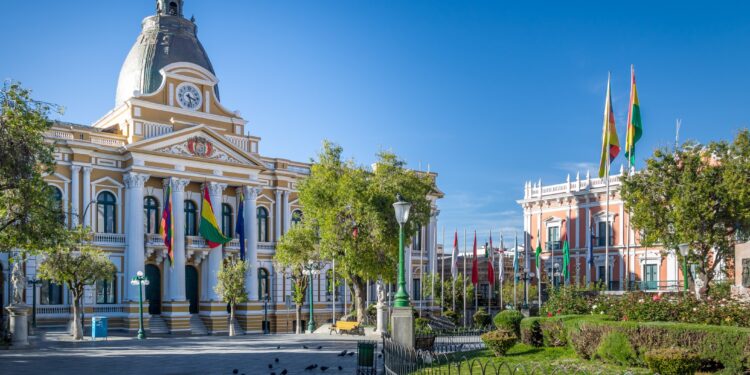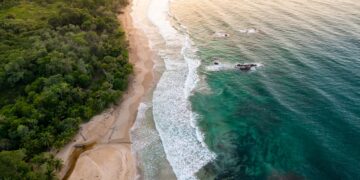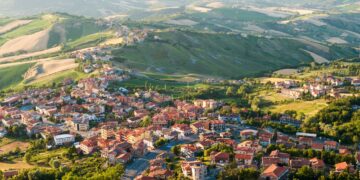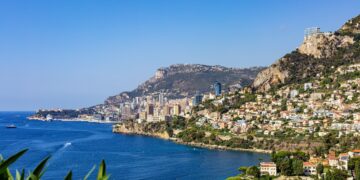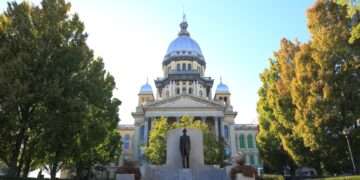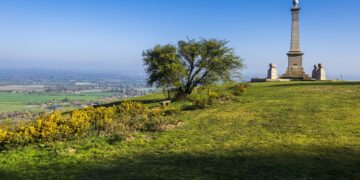Bolivia, with its diverse landscapes and rich cultural history, has provided the perfect backdrop for numerous films. From the dizzying heights of the Andes to the vast expanse of the Salar de Uyuni, the country’s unique settings have captured the hearts of filmmakers and audiences alike.
Top 10 Films Shot in Bolivia
From heart-wrenching dramas to adrenaline-pumping action flicks, Bolivia’s cinematic scenery has played a starring role in a range of films. Here are ten such movies that showcase the country’s unique charm:
- Butch Cassidy and the Sundance Kid (1969): This classic western, starring Paul Newman and Robert Redford, features Bolivia’s rugged landscapes as the infamous outlaws try to outrun the law.
- The Devil’s Miner (2005): This documentary delves into the harrowing world of Bolivian silver mines, exploring the lives of two young brothers working in the hazardous Potosí mines.
- Che (2008): Director Steven Soderbergh’s biopic about Che Guevara includes scenes set in Bolivia, where the revolutionary met his end.
- Salt and Fire (2016): Werner Herzog’s ecological thriller showcases the breathtakingly surreal Salar de Uyuni, the world’s largest salt flat.
- American Visa (2005): This Bolivian drama tells the story of a schoolteacher desperate to obtain a U.S. visa, set against the backdrop of Bolivia’s urban life.
- Our Brand Is Crisis (2015): Set in the political world of La Paz, this film highlights Bolivia’s turbulent political scene.
- Blackthorn (2011): This western revisits the life of Butch Cassidy, living under the alias James Blackthorn in Bolivia’s remote countryside.
- The Secret in Their Eyes (2009): This Argentine-Spanish crime drama includes sequences filmed in Bolivia, adding to the film’s atmospheric tension.
- Even the Rain (2010): This Spanish drama contrasts the Cochabamba Water War’s realities with a film crew’s attempt to recreate Columbus’s voyage.
- Carte Blanche (2015): This documentary explores Bolivia’s coca leaf culture, a significant part of its history and economy.
Bolivia’s diverse landscapes, from its vibrant cities to its rugged terrain, have played pivotal roles in these films. They not only add visual appeal but also often serve as a character in the narrative, influencing the storyline’s direction.
5 TV Shows Set in Bolivia
While Bolivia’s cinematic allure is undeniable, it also serves as a backdrop for compelling TV series. Here are five shows that transport viewers to the heart of Bolivia:
- Narcos (2015-2017): This popular Netflix series, while primarily set in Colombia, includes significant plotlines set in Bolivia, especially in its third season.
- Andes Magicos (2019): This nature documentary shines a spotlight on the Andean region’s unique biodiversity, with episodes dedicated to Bolivia’s natural wonders.
- Locked Up Abroad (2007-present): This documentary series features harrowing real-life stories of overseas imprisonment, including episodes set in Bolivia.
- The Amazing Race (2001-present): The hit reality show brought its contestants to Bolivia in its 13th and 18th seasons, showcasing the country’s diverse landscapes.
- No Reservations (2005-2012): In one episode, the late Anthony Bourdain explores Bolivia’s local cuisine and culture.
These series, from thrilling crime dramas to captivating travel shows, utilize Bolivia’s rich culture and scenery to create captivating narratives that keep viewers glued to their screens.
5 Animated Films Set in Bolivia
Bolivia’s diverse landscapes and vibrant culture have also inspired numerous animated films. Here are five of the best:
- The Emperor’s New Groove (2000): While not explicitly set in Bolivia, this Disney film draws inspiration from the Inca Empire, with its majestic landscapes resembling the Bolivian Andes.
- Pachamama (2018): This Netflix original film is set in the Andes during the time of the Incas and pays tribute to the indigenous cultures of Bolivia and Peru.
- El Americano: The Movie (2016): This Mexican-American animated film includes scenes set in Bolivia, adding a touch of South American flair to its narrative.
- Condorito: The Movie (2017): Although this Chilean film is not set in Bolivia, it features the Andean condor, a bird native to Bolivia, as its main character.
- A Mouse Tale (2015): The film’s protagonists, two brave mice, embark on a journey to the “Guardians of the Magical Stones” in the mystical land of Sansar, reminiscent of Bolivia’s unique landscapes.
From hilarious adventures to heartwarming tales, these animated films bring Bolivia’s spirit to the screen, captivating audiences of all ages.
Famous Books Set in Bolivia: 3 Classic and 3 Contemporary
Bolivia’s vivid landscapes, compelling history, and diverse cultures have served as the setting for both classic and contemporary literature. Here are three classic and contemporary books that bring the spirit of Bolivia to life:
Classic:
- “Lost City of the Incas” by Hiram Bingham. The explorer’s account of discovering Machu Picchu also includes his travels through Bolivia.
- “In Bolivia” by Eric Lawlor. This travelogue presents an insightful and descriptive exploration of Bolivia, from its highland cities to its remote jungles.
- “The Old Man Who Read Love Stories” by Luis Sepíºlveda. Set in the Amazon, this novel paints a vivid picture of life in Bolivia’s jungle region.
Contemporary:
- “Marching Powder” by Rusty Young. This gritty autobiography recounts the experiences of a British drug trafficker in Bolivia’s notorious San Pedro prison.
- “Affections” by Rodrigo Hasbíºn. This novel traces the real-life story of the Ertl family, who after WW2, escape to Bolivia.
- “The Water Will Carry Us Home” by Gabriella Robinson. This historical fiction novel is set during the African diaspora in Bolivia.
These books, from classic travelogues to contemporary novels, offer readers a captivating journey through Bolivia’s diverse landscapes and cultures.
Exploring Bolivia Filming Locations – Where to Go
Bolivia, with its diverse landscapes, from the dizzying heights of the Andes to the vast Salar de Uyuni, has long been a favored backdrop for filmmakers. If you’re eager to tread the paths of movie stars and soak up the cinematic history, here are some essential filming locations in Bolivia you must visit:
- Salar de Uyuni: The world’s largest salt flat has been featured in numerous films, including “Salt and Fire” and “Blackthorn.”
- Potosí: Known for its silver mines, Potosí served as a filming location for “The Devil’s Miner.”
- La Paz: Bolivia’s bustling capital city has been featured in films like “American Visa” and “Our Brand Is Crisis.”
- Cochabamba: The site of the historical Cochabamba Water War, as depicted in “Even the Rain.”
- Andes Mountains: The majestic Andes have served as the backdrop for films like “Butch Cassidy and the Sundance Kid” and “Che.”
Exploring Bolivia’s filming locations offers an exciting blend of entertainment and sightseeing, allowing visitors to engage with the country’s film heritage while enjoying its many cultural and natural attractions.
Where to Sleep in Bolivia: 3 Cheap and 3 Luxury
Whether you desire the opulence of a 5-star hotel or the affordability of a budget hostel, Bolivia’s accommodations encompass a wide range of options to suit every traveler.
Luxury:
- Casa Grande Hotel: Located in the heart of La Paz, this hotel offers luxury accommodations with stunning views of the city.
- Los Tajibos Hotel & Convention Center: This 5-star resort in Santa Cruz provides opulent suites and a luscious tropical garden.
- Hotel Luna Salada: Made entirely of salt, this unique hotel on the edge of the Salar de Uyuni offers a truly unique luxury experience.
Budget:
- Wild Rover Hostel La Paz: Known for its lively atmosphere, this hostel is a favorite among backpackers.
- The Beehive Hostel Sucre: This women-run hostel in Sucre offers affordable, cozy accommodations with a community focus.
- Loki Hostel Cusco: This popular backpacker hostel in Cusco provides budget accommodations with a vibrant social scene.
From the salt-made walls of Hotel Luna Salada to the buzzing atmosphere of Wild Rover Hostel, each option offers a unique way to experience Bolivia.
Where to Eat in Bolivia
From sumptuous fine dining to flavorful street food, Bolivia’s diverse culinary scene caters to all tastes and budgets. Here are three budget and luxury dining options:
Budget:
- Antojitos: Located in La Paz, this local favorite serves up tasty and affordable Bolivian cuisine.
- El Carrito: A popular street food stall in Santa Cruz, known for its delicious Salteñas.
- Mercado Lanza: This bustling market in La Paz is the perfect place to try a variety of Bolivian dishes at budget prices.
Luxury:
- Gustu: Located in La Paz, this high-end restaurant offers a unique gastronomic experience with its focus on Bolivian produce and culinary techniques.
- Jardín de Asia: This Santa Cruz restaurant combines Bolivian ingredients with Asian flavors in a luxurious setting.
- La Estancia: Known for its grilled meats, this steakhouse in La Paz offers a refined dining experience.
Whether you’re in the mood for a gourmet meal or a quick bite, Bolivia’s culinary scene offers an array of flavors to explore.
Detailed Itinerary Day by Day
Embark on a cinematic journey through Bolivia, exploring the diverse landscapes and cities that have served as the backdrop for numerous films and TV series.
Day 1: La Paz
Start your tour in the capital city of La Paz. Visit the city center, where scenes from “American Visa” were filmed. Enjoy a traditional Bolivian lunch at a local market, like Mercado Lanza. In the afternoon, take a cable car ride to El Alto for panoramic views of the city, as seen in “Our Brand Is Crisis.”
Day 2: Potosí
Travel to the colonial city of Potosí, which featured in “The Devil’s Miner.” Tour the historic silver mines and learn about Bolivia’s mining history. Enjoy the city’s architectural beauty, including the impressive Royal Mint.
Day 3: Salar de Uyuni
Embark on a journey to the Salar de Uyuni, the world’s largest salt flat. Explore this surreal landscape, as seen in “Salt and Fire” and “Blackthorn.” Spend the night in a unique salt hotel like Hotel Luna Salada.
Day 4: Cochabamba
Head to Cochabamba, the setting for “Even the Rain.” Visit the city’s main square and the Cristo de la Concordia statue. Sample local delicacies, such as Silpancho, a traditional Cochabamba dish.
Day 5: Santa Cruz
End your tour in Santa Cruz, a city that blends modernity with tradition. Enjoy the city’s vibrant nightlife and try regional cuisine at a restaurant like Jardín de Asia. Visit the city’s central plaza, a frequent filming location for local productions.
Take this journey through Bolivia’s cinematic landscapes, immersing yourself in the history and culture that have made this country a favorite among filmmakers.
Cryptid Legends and Curiosities
Bolivia, with its rich folklore and diverse ecosystems, is home to numerous cryptid legends and curiosities. These tales add a layer of mystique to the country’s cinematic appeal.
One such legend is the “Jichi”, a mythical creature said to dwell in the Bolivian lowlands’ forests. According to local lore, the Jichi lures unsuspecting victims into the forest with its enchanting music.
Bolivia’s Lake Titicaca, the highest navigable lake in the world, has its own share of mysteries. It’s said that the lake is home to a giant frog, known as the “Titicaca Water Frog,” which can reach up to a foot in length.
These cryptid tales, combined with Bolivia’s unique landscapes, add an element of intrigue to film settings, providing a rich source of inspiration for filmmakers.
Hidden Gems in Bolivia
Beyond the well-trodden paths of the Salar de Uyuni and La Paz lies a wealth of lesser-known filming locations in Bolivia. These hidden gems offer unique settings for filmmakers and an off-the-beaten-path experience for travelers.
One such hidden gem is the town of Torotoro, located southeast of Cochabamba. Home to the Torotoro National Park, this area boasts dinosaur footprints, stunning canyons, and caverns, offering a unique setting for adventure films.
Another hidden gem is Samaipata, a small town located in the foothills of the Andes. Known for its pleasant climate and the nearby “El Fuerte” archaeological site, Samaipata offers a tranquil, scenic backdrop for films.
These lesser-known locations not only offer unique film settings but also provide travelers with a chance to explore Bolivia’s untapped beauty.
What to Pack for a Trip to Bolivia
Packing for a trip to Bolivia requires careful planning, given the country’s diverse climates. Here’s what you need:
- Layers: Temperatures can fluctuate dramatically between day and night, so packing layers is essential.
- Sun Protection: The Bolivian sun can be strong, especially in high-altitude areas like La Paz and the Salar de Uyuni. Bring a hat, sunglasses, and sunblock.
- Hiking Boots: If you plan to explore Bolivia’s many incredible hiking trails or the uneven streets of La Paz, sturdy footwear is a must.
- Rain Jacket: Bolivia’s rainy season runs from November to March. Even if you’re visiting outside of these months, it’s a good idea to pack a waterproof jacket.
- Water Bottle: Staying hydrated is crucial in Bolivia’s high-altitude areas.
Proper packing will ensure you’re comfortable and prepared for any adventure that comes your way in Bolivia.
Transportation Tips for Getting Around Bolivia’s Filming Locations
Traveling around Bolivia can be an adventure in itself, with various modes of transport available from bustling city streets to remote mountainous areas.
Domestic Flights: For long distances, consider taking a domestic flight. Bolivia’s main airlines are BOA (Boliviana de Aviación) and Amaszonas.
Buses: For shorter distances, buses are the most common means of transportation. They range from modern coach buses to older models.
Taxis and Shared Taxis: In cities, taxis are a convenient way to get around. For longer distances, “trufis” (shared taxis) are a popular option.
Car Rental: Renting a car gives you the most flexibility. However, keep in mind that driving in Bolivia can be challenging due to road conditions and traffic rules.
Travel Documents Needed for Visiting Bolivia
Before embarking on your cinematic journey through Bolivia, ensure you have all the necessary travel documents:
- Passport: Your passport should be valid for at least six months beyond your planned departure date.
- Visa: Depending on your nationality, you may need a visa to enter Bolivia. Some nationalities can obtain a visa on arrival, while others must apply in advance.
- Proof of Onward Travel: You may be asked for proof of onward travel, such as a return or onward flight ticket.
- Vaccination Certificate: If you’re traveling from a country where yellow fever is endemic, you’ll need a certificate of vaccination.
Having these documents in order will ensure a smooth entry into Bolivia and allow you to fully enjoy your cinematic tour.
Conclusion: Your Ultimate Bolivian Movie Tour Guide
Whether it’s the rugged landscapes that have set the scene for gripping adventure films, or the bustling city streets that have played a backdrop to powerful dramas, Bolivia’s cinematic charm is undeniable. With this guide, you’re ready to embark on a journey through Bolivia’s cinematic landscapes. So, pack your bags, and get ready for your close-up with Bolivia’s star-studded attractions!


